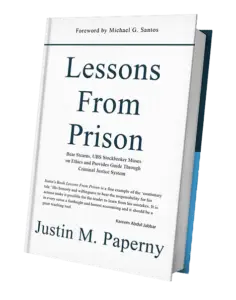When I met Michael Santos in prison, he had already served 22 years. I had just started an 18-month sentence. One of the first things he asked me was, “On a scale of one to ten, how hard are you preparing to go home?” I said “one.” He didn’t argue. He explained exactly what that meant: I’d go home with no plan, no documented work, no leverage—and I’d end up asking someone else for a job I hadn’t earned.
The difference between time served and time used is documentation. The Bureau of Prisons now backs that point with policy. The June 2025 memo makes it clear: “Documentation should support the individual’s release plan.”
The Release Plan Is the Standard
The BOP no longer evaluates inmates based on good intentions or general effort. Referrals for home confinement, community placement, or other favorable reviews are influenced by one thing: the strength of your release plan. Not a checklist. Not a wish list. A written, detailed, evolving record that proves you are preparing in a way they can verify.
That includes:
- Coursework with dates and outcomes
- Employment preparation with timelines and targets
- Financial planning tied to restitution and reentry
- Personal statements that reflect what you’ve learned and how you plan to apply it
Without that level of detail, you’ll be treated like every other person who submitted general statements with no documentation.
Michael Santos Built the Model Before It Became Policy
Michael Santos didn’t just talk about preparation—he documented it. Every course, every milestone, every published article was part of his release plan. He didn’t rely on final impressions or personality. He built a paper trail of value. That approach became the Release Plan Workbook, which he’s donated to thousands of people in federal prison. The workbook lays out exactly how to write, revise, and structure a plan that meets BOP expectations.
What Santos pioneered is now the standard. And he didn’t stop with the workbook.
Publish Your Release Plan Where Stakeholders Can See It
PrisonProfessorsTalent.com is the platform where prisoners can publish their release plans, document personal growth, and create a record that case managers, probation officers, and judges can review without delay. Michael Santos’s profile is live on the site. His work is transparent. That’s the model the BOP now expects others to follow.
A release plan isn’t about trying to impress someone. It’s about providing documented evidence of preparation—early, consistently, and in a format that supports administrative review.
Don’t Waste the Sentence
When I finally listened to Michael, it was because he was right. I had spent months doing nothing that mattered. I hadn’t written a plan. I hadn’t documented a single step. And I was no different than the men around me who had excuses, but no record of effort.
If you’re in prison and haven’t started your release plan, begin by outlining your goals—education, employment, restitution, and housing. Write what you’ve done so far, document it with dates, and continue updating it each week. Then publish that plan on PrisonProfessorTalent.com so case managers and probation officers can see your progress.
Join our weekly webinar every Tuesday at 11 a.m. PST / 2 p.m. EST or schedule a personal call to get step-by-step guidance on writing, documenting, and publishing a release plan with the evidence stakeholders need to support early placement or reduced custody.
Justin Paperny



